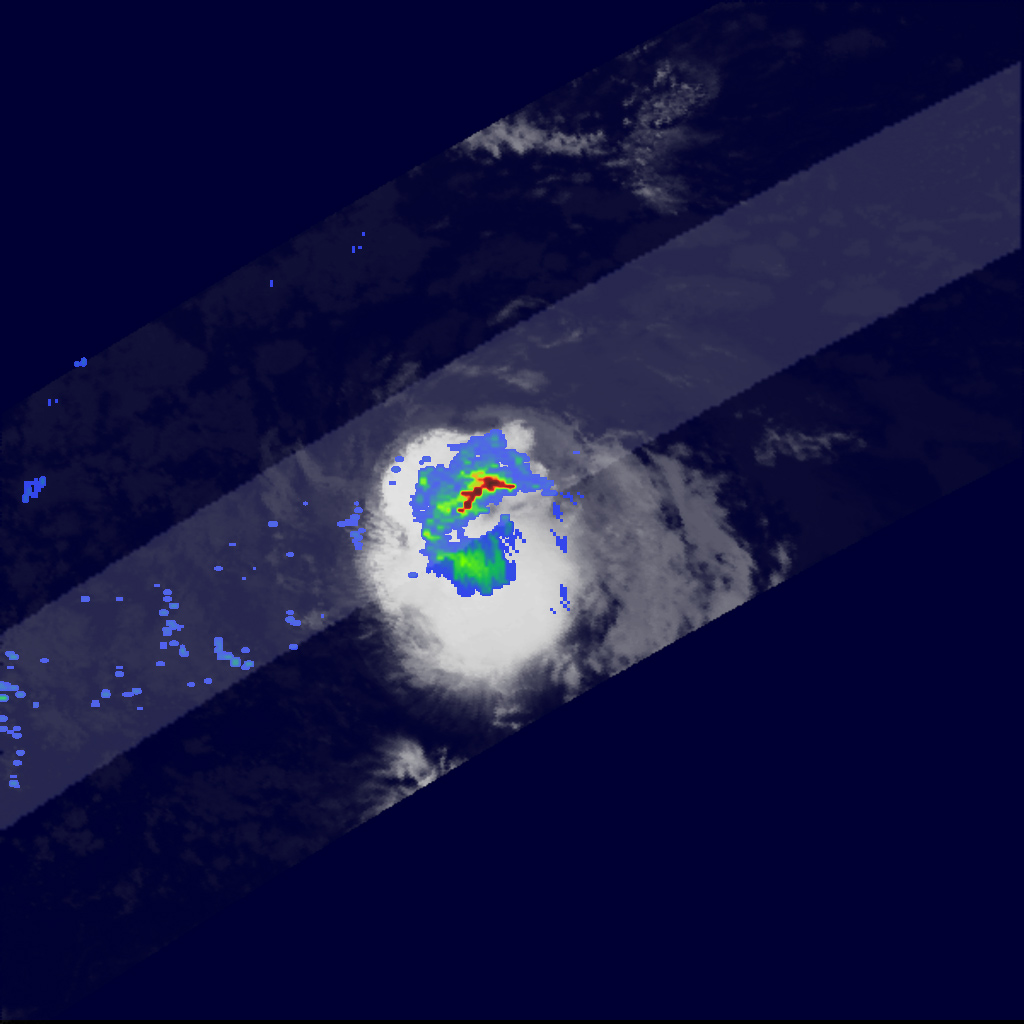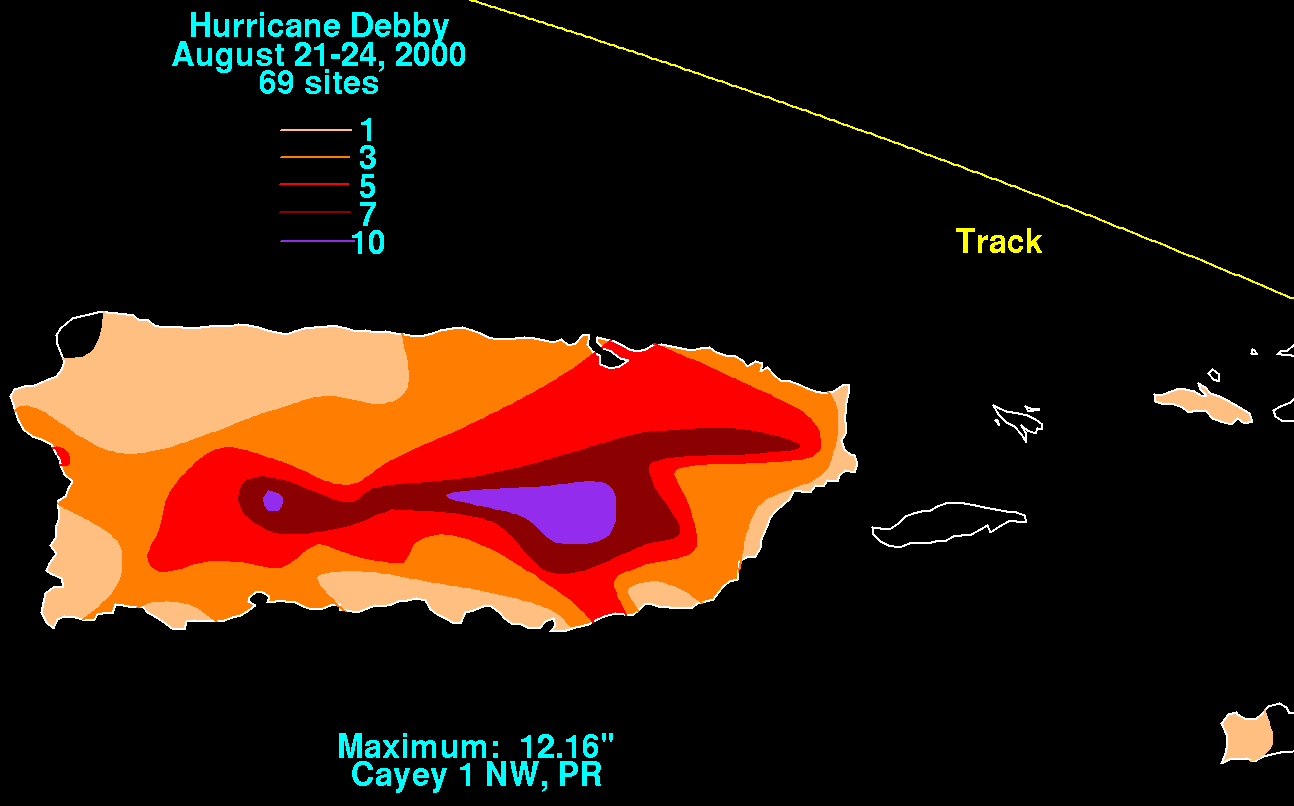Tropical Storm Debby’s Formation and Development: Tropical Storm Debby Hurricane

Tropical Storm Debby, a significant weather event, formed in the Atlantic Ocean and impacted several regions. Its development was influenced by a complex interplay of meteorological factors, resulting in a storm with a distinct track and intensity changes.
Formation and Initial Development
Tropical Storm Debby originated from a tropical wave that emerged off the coast of Africa. This wave, characterized by a cluster of thunderstorms, moved westward across the Atlantic, gradually gaining strength as it encountered favorable atmospheric conditions. Warm ocean waters provided the necessary heat and moisture for the storm to intensify, while light wind shear allowed for the vertical development of thunderstorms, leading to the formation of a low-pressure center.
Track and Intensity Changes
Debby’s track was influenced by several factors, including the steering currents in the upper atmosphere and the presence of nearby high-pressure systems. As the storm moved westward, it encountered a region of weaker steering currents, causing it to meander slightly. However, it eventually turned northward, steered by a high-pressure system to its east.
The intensity of Tropical Storm Debby fluctuated throughout its lifespan. Initially, it intensified rapidly, reaching peak wind speeds of [Insert peak wind speed] as it moved over warm waters. However, as it moved northward into cooler waters and encountered stronger wind shear, the storm weakened, losing some of its intensity.
Factors Influencing Trajectory and Strength
The trajectory and strength of Tropical Storm Debby were influenced by a combination of factors, including:
- Sea Surface Temperature: Warm ocean waters provided the necessary heat and moisture for the storm to intensify. As Debby moved over cooler waters, it weakened.
- Wind Shear: Light wind shear allowed for the vertical development of thunderstorms, promoting intensification. However, stronger wind shear can disrupt the storm’s structure and lead to weakening.
- Steering Currents: Upper-level winds, known as steering currents, influence the storm’s direction. Debby’s track was influenced by the presence of nearby high-pressure systems and the strength of the steering currents.
- Coriolis Effect: The Earth’s rotation causes a deflection of moving objects, including storms. This effect, known as the Coriolis effect, played a role in Debby’s westward movement and subsequent northward turn.
Impacts of Tropical Storm Debby

Tropical Storm Debby, despite its relatively short lifespan, left a lasting impact on several regions, primarily in the southeastern United States. Its heavy rains and strong winds caused significant damage, disrupting lives and livelihoods.
Economic and Social Consequences
Tropical Storm Debby’s impact extended beyond physical damage, leading to significant economic and social consequences. The storm caused widespread power outages, disrupting businesses and daily life. The agricultural sector suffered losses due to flooding and crop damage, affecting food supply chains.
- Property Damage: The storm caused substantial property damage, particularly in Florida, Georgia, and Alabama. Homes and businesses were flooded, and infrastructure like roads and bridges sustained damage.
- Infrastructure Disruption: Debby’s heavy rains led to widespread flooding, damaging roads, bridges, and other critical infrastructure. This disruption hindered transportation and access to essential services, impacting communities for weeks after the storm.
- Displacement of Residents: Many residents were forced to evacuate their homes due to flooding and other storm-related dangers. This displacement created challenges for those affected, requiring temporary housing, food, and other essential services.
Resilience and Recovery Efforts
Despite the devastation, communities impacted by Tropical Storm Debby demonstrated remarkable resilience and strength. Local, state, and federal agencies collaborated to provide relief efforts, including search and rescue operations, emergency shelter, and financial assistance.
“The spirit of community was evident in the way people came together to help each other,” said a volunteer involved in the recovery efforts. “Neighbors helped neighbors, and strangers offered support to those in need.”
- Community Support: Local communities organized volunteer efforts to assist those affected by the storm. Residents helped clear debris, provide food and water, and offer emotional support to their neighbors.
- Government Assistance: The government provided financial assistance to individuals and communities affected by the storm. This included grants for repairs, temporary housing, and other recovery efforts.
- Reconstruction and Rebuilding: The recovery process involved rebuilding damaged infrastructure and homes. This required significant time and resources, but communities worked tirelessly to restore their lives and livelihoods.
Lessons Learned and Preparedness

Tropical Storm Debby, while not the most intense storm in recent history, provided valuable insights into the vulnerabilities of communities and the effectiveness of preparedness measures. Examining the responses to Debby’s impact reveals crucial lessons for enhancing future disaster preparedness strategies.
Preparedness Measures and Effectiveness, Tropical storm debby hurricane
Before Debby’s arrival, authorities implemented various preparedness measures, including issuing timely warnings, activating emergency shelters, and mobilizing emergency response teams. While these efforts mitigated some of the storm’s impacts, several shortcomings were identified.
- The communication of warnings and evacuation orders to vulnerable populations, particularly those without access to reliable communication channels, proved challenging. This resulted in some individuals being unaware of the impending threat, leading to delays in evacuations and increased risk.
- While emergency shelters were activated, their capacity was insufficient to accommodate the influx of displaced individuals. This resulted in overcrowding and limited access to essential resources, such as food, water, and medical care.
- The response to power outages and infrastructure damage was hampered by inadequate coordination between various agencies and a lack of readily available resources, such as generators and repair equipment. This prolonged the duration of disruption and increased the overall impact on affected communities.
Lessons Learned from Debby’s Impact
The experience of Tropical Storm Debby highlighted several key lessons for improving disaster preparedness, mitigation, and response strategies.
- The need for effective communication channels that reach all members of the community, including those with limited access to technology, is crucial. This includes utilizing multiple communication platforms, such as radio broadcasts, community outreach programs, and social media, to ensure widespread dissemination of warnings and evacuation orders.
- Expanding the capacity of emergency shelters and developing alternative housing options, such as temporary shelters and community centers, is essential to accommodate larger populations during evacuations. This ensures adequate space, resources, and access to essential services for displaced individuals.
- Improving coordination and collaboration between different agencies involved in disaster response, including local governments, emergency services, and utility companies, is crucial. This includes establishing clear lines of communication, developing standardized protocols, and pre-positioning essential resources, such as generators and repair equipment, to ensure a swift and effective response to infrastructure damage.
- Investing in infrastructure improvements, such as strengthening flood defenses, upgrading power grids, and enhancing communication systems, is essential to mitigate the impact of future storms. This reduces the risk of damage and disruption, allowing for a quicker recovery and minimizing the overall impact on affected communities.
Applying Lessons to Future Storms
Consider a hypothetical scenario where a Category 2 hurricane is projected to make landfall in a coastal community. The lessons learned from Tropical Storm Debby can be applied to enhance preparedness for this event.
- Effective Communication: Authorities would utilize a multi-pronged approach to disseminate warnings and evacuation orders. This would involve radio broadcasts, public announcements in multiple languages, community meetings, and social media campaigns. This ensures that all residents, regardless of their access to technology, receive timely information and guidance.
- Enhanced Sheltering: The community would activate multiple emergency shelters, including schools, community centers, and temporary shelters, to accommodate the expected influx of evacuees. This would ensure sufficient space, resources, and access to essential services for displaced individuals.
- Improved Coordination: A dedicated coordination center would be established, bringing together representatives from local governments, emergency services, utility companies, and other relevant agencies. This center would facilitate communication, resource allocation, and operational planning, ensuring a coordinated and efficient response to the hurricane’s impact.
- Infrastructure Resilience: The community would have invested in infrastructure improvements, such as strengthening seawalls, upgrading power lines, and installing backup generators, to minimize the impact of the hurricane. This would reduce the risk of damage and disruption, enabling a faster recovery and minimizing the overall impact on residents.
Tropical storm debby hurricane – Alah, Tropical Storm Debby tu memang dahsyat, macam badai nan datang dari dunia lain. Tapi, kalau lah ado nan ado di rumah, bisa lah kito hias-hias rumah jo kursi meja rias warna merah nan elok tu, red dressing table chair , biar hati kito tenang walau badai menderu di luar.
Moga-moga rumah kito selamat dari bencana, ya!
Alamak, Tropical Storm Debby tu memang kuat, rumah denai macam nak roboh! Untung ado ruang tamu denai ado corner chair with table tu, jadi denai ado tempat nak duduk tenang sambil minum kopi panas. Nanti lah kalau hujan reda, denai nak keluar cek keadaan rumah lagi.
